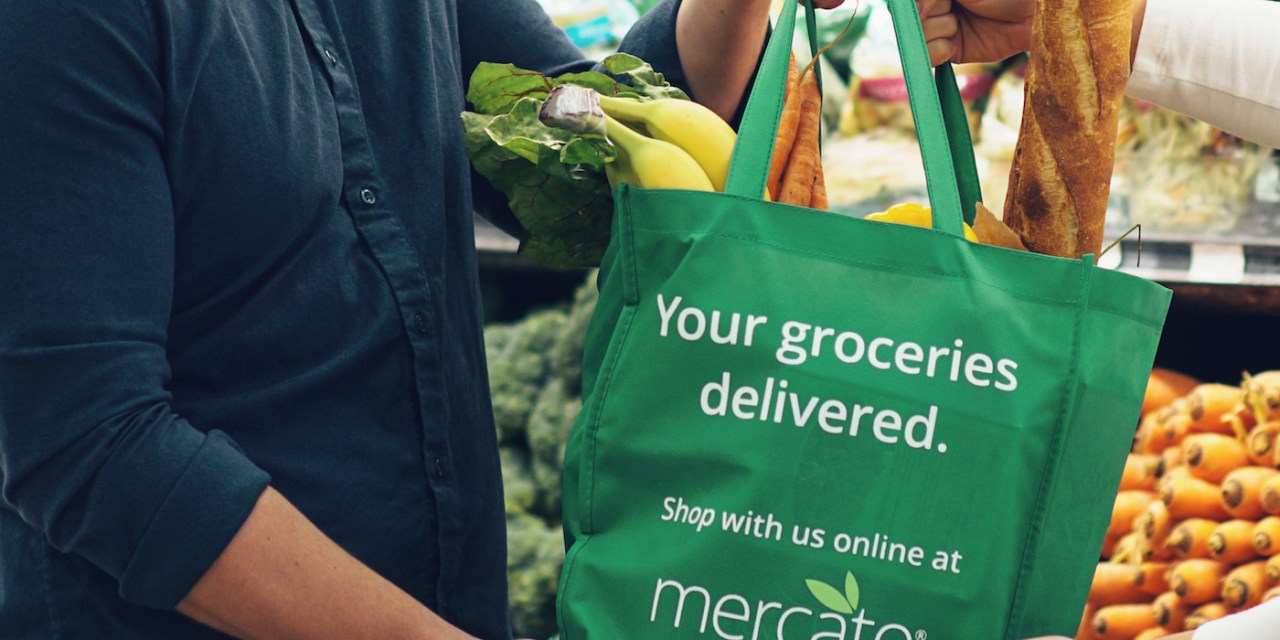Local grocers are seeing a surge as they build out digital capabilities

Grocery stores by and large are seeing a huge sales surge right now. But for small and independent grocery store chains, who have struggled to remain competitive against increased investments in grocery by Walmart and Amazon, this a newfound opportunity to get their stores in front of new customers is proving to be an especially important lifeline. The question is whether this surge will last for these mom and pop players.
Mercato, a grocery delivery platform that focuses on small grocers and speciality food stores, said that it has seen a 5,000% spike in orders over the past month, and has been signing up anywhere from 30 to 50 new grocery stores for its platform each day. A March survey from marketing firm Brick Meets Click found that 26% of respondents were using an online grocery service for the first time, and 43% said they were extremely or very likely to continue to shop for groceries online even after the coronavirus ended.
Kyle Rees, a director at research firm Gartner, said that right now, many consumers aren’t choosing their grocery store based on brand loyalty, but based on which ones have the quickest delivery times, as well as have the most pantry staples in-stock. As such, that provides an opportunity for smaller grocery stores to win over shoppers who previously flocked to big-box chains, if they can provide a better experience for first-time shoppers.
Up until now, online grocery has been slow to take off in the U.S. A report from Coresight Research found that in 2018, just 2.2% of grocery sales in the U.S. took place online. That, combined with the fact that an e-commerce operation is expensive for grocers to build out, lead many smaller grocers to resist offering delivery services.
The challenge now for many grocers trying to win over new customers is that, their biggest selling points now may not be the same selling points they need to rely on once the coronavirus outbreak is over. Gauri Munuswamy, vice president of sales and customer retention at Mercato said that for many of the grocers who offer delivery through Mercato, the specialty food items that they sell and are harder to find at bigger grocery chains are typically their biggest selling point. But now, Mercato is advising new grocers who are signing up through the platform to first make pantry items available for delivery as soon as possible, and then add its specialty food items to their Mercato listing.
“A lot of folks have been shopping for those everyday essentials, they are finding them at their local independents, and then discovering all of the other uniqueness they have to offer,” Munuswamy said.
But perhaps the most important consideration for shoppers right now is which grocer will offer the fastest and/or the most reliable delivery service. Munuswamy declined to say what the average wait time is for grocery stores offering delivery through Mercato right now, though some stores in New York City that are selling through Mercato are showing the next available delivery time as a week to a week and a half out. In New York City, FreshDirect only shows delivery slots a week in advance, and right now all of the delivery slots available for this reporter’s zip code shows that they are all booked. Meanwhile, Amazon PrimeNow and Amazon Fresh don’t list any available delivery times.
Ad position: web_incontent_pos1
Munuswamy said that some stores on Mercato have found success in closing their stores for one or two days out of the week, and using those days to only fulfill Mercato orders.
Even if independent grocery chains can’t beat national chains on delivery speed, they may be able to give customers a more accurate delivery window, or beat out big-box chains in communicating with customers what substitutes they would like for items that are out of stock. “If I was small- or mid-sized business owner right now I would be looking at what are the challenges that the big distributors struggle with…communication of delivery times, the surge of orders, whether or not we can actually fulfill same day orders,” Rees said.
Rees said that local grocery stores may also be able to more quickly adapt content on their website to meet customer’s needs. He noted that in Gartner’s most recent Digital IQ Index report on grocery stores, while 80% of grocers included recipes on their sites, only 40% included meal planning guides. He said that one thing local grocers may want to consider doing is including meal planning guides on their website, catering to shoppers who are doing their grocery shopping for one to two weeks at a time.
“I think there’s maybe a challenge there, to grocery store brands, which is what can we maybe do to help our customers feel more in control about how they go about planning for the week ahead,” he said.

